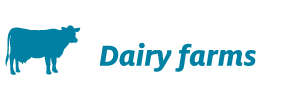Click on the arrows on the variables in the header row to reorder the farm practices based on that variable.
You can also download this print version for a saved hard copy.
| Nitrogen (N) | Phosphorus (P) | Sediment (Sed) | Pathogens (Pa) | |
| Low |
Less than 10% | Less than 20% | ||
| Medium |
From 10 to 25% | From 20 to 50% | ||
| High |
More than 25% | More than 50% | ||
| Cost | Benefit | |
|
Low $ |
Limited input of farmer time and expenditure. Limited practice change required. |
Little change to farm profit as a result of this practice, or may require small changes to farm infrastructure. |
|
Medium $$ |
Moderate input of farmer time and expenditure. Some practice change required. |
Practice likely to result in a moderate increase in profitability or improved management. |
|
High $$$ |
Significant input of farmer time and significant expenditure. Significant practice change required. |
Very profitable practice or results in improved management e.g. large reduction in farm operational costs. |




